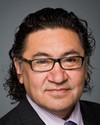Mr. Speaker, it is my great pleasure to rise and speak in support of Bill C-33, the first nations control of first nations education act.
The introduction of Bill C-33 follows years of discussions, dialogue, and studies reflecting the efforts of many people, both first nations and government officials, to arrive at this point.
All first nations across Canada were presented with numerous means of engaging in the consultation process and offered multiple opportunities to be a part of the dialogue and process leading to this legislation.
In 2011 the Government of Canada and the Assembly of First Nations jointly launched a national panel on first nations elementary and secondary education, which recommended, in its final report, a first nations education act.
In December 2012 the Government of Canada launched a consultation process and released a discussion guide to help support open and meaningful consultation activities on the government's proposed legislative approach.
Between December 2012 and May 2013 the Government of Canada held face-to-face regional consultation sessions, video and teleconference sessions, and online consultation activities with first nations across Canada.
The government received various input on a variety of topics, including first nations control over first nations education, inherent rights and treaties, the transition of legislation, funding, language and culture, and parental involvement in education.
The legislation that we see before us today reflects the feedback that we received throughout the extensive consultation process.
Engagements with first nations did not end there. On October 22, 2013, the Minister of Indian Affairs and Northern Development released for public review the document “Working Together for First Nation Students: A Proposal for a Bill on First Nation Education”. This was the result of input and feedback received on the blueprint for legislation.
The draft legislative proposal was shared with more than 600 chiefs and band councils and every first nation community across Canada, as well as provincial governments, for further input prior to the proposed legislation being finalized. Parents, educators, and students were also encouraged to submit comments on the proposal to further influence the development of this bill.
In response, the Assembly of First Nations issued an open letter that listed five conditions that it felt were necessary in order to reach a successful agreement on this legislation. Members have heard many of their colleagues testify that our government has not only met but exceeded these five conditions.
If the first nations control of first nations education act is passed, the Government of Canada will continue working with first nations on the development of necessary regulations to implement this proposed legislation.
Of course we recognize that funding is necessary to support the implementation of Bill C-33 to support first nations and first nation education authorities as they take on roles and responsibilities established under the first nations control of first nations education act. The Government of Canada has invested through economic action plan 2014 an additional $1.252 billion over three years beginning in 2016-17 and statutory core funding on top of the existing $1.55 billion per year for elementary and secondary education on reserve. Even after the three-year period has ended, this funding would continue to increase at a rate of 4.5% each and every year. The funding would be stable and predictable, ensuring that schools have the resources necessary to help students meet their needs and prepare them to participate in Canada's labour market.
In addition, the Government of Canada would help to support the transition to legislation by creating an enhanced education fund that would provide $160 million over four years, beginning in 2015-16. This funding would help develop the partnerships and institutional structures required to implement the proposed legislation, including support for first nations education authorities.
Another important feature of Bill C-33 is the issue of ministerial oversight. Far from giving the Minister of Aboriginal Affairs and Northern Development more power or more control over first nations education, under this legislation the minister would have far less decision-making power than provincial ministers of education have in their jurisdictions and far less than he has today.
In addition, under Bill C-33 a joint council of educational professionals would be put in place to support the implementation of this legislation. The joint council would have a membership of up to nine members, including a chair. Half of these members would be appointed by the Assembly of First Nations, four would be nominated by the minister, and the chair would be jointly selected by the Assembly of First Nations and the minister.
The joint council would be made up of recognized educational experts and would have the role of supporting first nations and first nations education authorities in the improvement of their education system, as well as the oversight role of ensuring that the ministerial powers provided by the act are exercised with the benefit of the first nations' perspective and are used as a last resort. Indeed, the minister would not be able to create regulations or appoint temporary administrators without the advice of this joint council.
Under the act, first nations or first nation education authorities would have the sole authority to hire and manage school inspectors, oversee school operations, and deal with situations where an individual school is not providing quality education to students. Under exceptional circumstances, the minister could appoint a temporary administrator under clause 40, but only after seeking the advice of the joint council of education professionals. This provision would only be exercised in exceptional circumstances, such as where inspection reports have not been submitted, significant issues have been revealed, standards are not being met, or there is significant risk to student well-being and success. It should be noted that these are the same conditions that would trigger a similar response in provincially run schools.
Finally, I would like to touch briefly on the issue of language and culture. The Government of Canada and first nations believe that language and culture are essential to successful first nation education. Consistent with the Prime Minister's announcement on February 7, 2014, clause 21 of the first nations control of first nations education act would enable first nations to incorporate their languages and cultures into school curricula and offer language and culture programming. Clause 43 of the proposed legislation would also commit the Government of Canada to providing funding to support language and culture programming as part of its core funding.
The intent of the proposed legislation is to create a legislative framework within which first nations would exercise control over first nations education. First nation schools and education authorities would also have full decision-making powers in terms of curriculum choice, providing it meets education standards under the act and the establishment of school policies and school procedures.
In summary, Bill C-33 is an important piece of legislation. Developed in consultation with first nations, it is an essential and overdue step in ensuring that first nation students have the same quality of education and access to education as other students in Canada. I encourage my hon. colleagues to join me in supporting Bill C-33.







